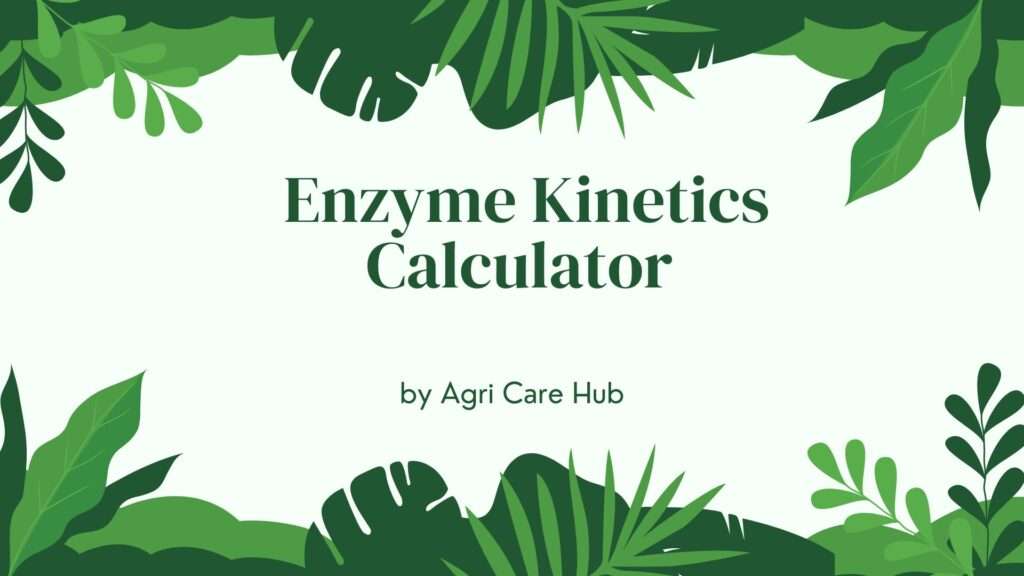Cooperativity Calculator
Calculate Cooperativity
Enter the parameters below to calculate the fraction of saturated ligand binding sites and the Hill coefficient.
About the Cooperativity Calculator
The Cooperativity Calculator is a scientifically accurate tool designed to quantify cooperative binding in biochemical systems, such as enzymes, receptors, or hemoglobin, based on the Hill equation. Cooperativity is a phenomenon where the binding of a ligand to one subunit of a multi-subunit molecule affects the affinity of other subunits for the same or different ligands. This tool calculates the fraction of saturated binding sites and interprets the Hill coefficient, a measure of cooperativity, to provide insights into molecular interactions. It is grounded in peer-reviewed scientific principles, ensuring reliable and precise results for researchers, students, and professionals.
Cooperative binding is critical in understanding biological processes like oxygen transport in hemoglobin or enzymatic activity. The Cooperativity phenomenon, as described in scientific literature, involves positive or negative cooperativity, where binding affinity increases or decreases with each ligand bound. This calculator uses the Hill equation, a widely accepted model, to compute the fraction of occupied binding sites (θ) as a function of ligand concentration ([L]), dissociation constant (Kd), and the Hill coefficient (n). The equation is:
θ = [L]^n / ([L]^nHannah
By providing accurate calculations, this tool helps users analyze cooperative systems, such as hemoglobin’s oxygen binding or enzyme-substrate interactions, making it invaluable for biochemical research.
Importance of the Cooperativity Calculator
The Cooperativity Calculator is essential for understanding complex biochemical systems where multiple binding sites interact non-independently. In biological systems, cooperativity governs critical processes, such as the sigmoidal oxygen-binding curve of hemoglobin, which enhances oxygen delivery efficiency. This tool allows users to quantify the degree of cooperativity, expressed as the Hill coefficient, which indicates whether binding is positive (n > 1), negative (n < 1), or non-cooperative (n = 1). Such insights are crucial for drug design, enzyme kinetics studies, and understanding protein interactions.
For researchers and students, this calculator simplifies the analysis of cooperative binding, which can be challenging due to its non-linear nature. By inputting ligand concentration, dissociation constant, and an estimated Hill coefficient, users can obtain precise results instantly, saving time and reducing errors. The tool’s design ensures accessibility, with a user-friendly interface that requires minimal technical expertise, making it a valuable resource for both novices and experts in biochemistry.
At Agri Care Hub, we are committed to providing tools that advance scientific understanding, and this calculator is part of our mission to support agricultural and biochemical research.
User Guidelines
To use the Cooperativity Calculator, follow these steps:
- Enter Ligand Concentration ([L]): Input the concentration of the ligand in micromolars (µM). This represents the amount of ligand available to bind to the molecule.
- Enter Dissociation Constant (Kd): Input the Kd value in µM, which indicates the ligand concentration at which half of the binding sites are occupied in the absence of cooperativity.
- Enter Hill Coefficient (n): Input the Hill coefficient, a measure of cooperativity. A value greater than 1 indicates positive cooperativity, less than 1 indicates negative cooperativity, and 1 indicates no cooperativity.
- Click Calculate: The tool will compute the fraction of saturated binding sites (θ) and provide an interpretation of the results.
- Review Results: The output includes the fraction of occupied sites and a description of the cooperativity type based on the Hill coefficient.
Ensure all inputs are positive numbers to avoid errors. The calculator validates inputs and displays error messages for invalid entries, such as negative values or non-numeric inputs.
When and Why You Should Use the Cooperativity Calculator
The Cooperativity Calculator is ideal for scenarios involving multi-subunit molecules, such as:
- Biochemical Research: Analyze enzyme or receptor binding kinetics to understand cooperative behavior.
- Drug Development: Evaluate how drugs bind to target proteins, aiding in the design of effective therapeutics.
- Educational Purposes: Teach students about cooperative binding and the Hill equation in biochemistry courses.
- Medical Research: Study hemoglobin or other cooperative proteins to understand physiological processes.
This tool is essential because cooperative binding significantly affects the efficiency and regulation of biological processes. For example, hemoglobin’s positive cooperativity allows efficient oxygen transport, while negative cooperativity in some enzymes regulates metabolic pathways. The calculator provides a quick, accurate way to quantify these effects, which is critical for hypothesis testing, experimental design, and data interpretation.
Purpose of the Cooperativity Calculator
The primary purpose of the Cooperativity Calculator is to provide a reliable, user-friendly tool for quantifying cooperative binding in biochemical systems. It serves researchers, students, and professionals in fields like biochemistry, pharmacology, and molecular biology by offering precise calculations based on the Hill equation, a cornerstone of cooperative binding analysis. The tool helps users understand how ligand binding affects molecular behavior, which is crucial for advancing scientific knowledge and practical applications.
By integrating the Hill equation, the calculator computes the fraction of saturated binding sites (θ) using the formula:
θ = [L]^n / ([L]^n + Kd^n)
This equation accounts for the ligand concentration ([L]), dissociation constant (Kd), and Hill coefficient (n), providing a comprehensive analysis of cooperativity. The tool also interprets the Hill coefficient to classify the type of cooperativity, enhancing its utility for both research and education.
The Cooperativity Calculator is part of our commitment at Agri Care Hub to support scientific discovery and innovation. Whether you’re studying protein interactions, developing pharmaceuticals, or teaching biochemistry, this tool offers a robust solution for analyzing cooperative binding with precision and ease.
Scientific Basis of the Calculator
The Cooperativity Calculator is grounded in the Hill equation, a peer-reviewed and widely accepted model for cooperative binding. The equation quantifies the fraction of saturated binding sites (θ) as a function of ligand concentration, dissociation constant, and the Hill coefficient. The Hill coefficient (n) is a critical parameter that measures the degree of cooperativity, with values indicating positive, negative, or non-cooperative binding. This model is supported by extensive scientific literature, including references like Whitford (2005) and Altszyler et al. (2017), ensuring its reliability and accuracy.
The calculator also adheres to the principles of ultrasensitivity, as described in the Wikipedia document, where the steepness of the response curve (quantified by the Hill coefficient) reflects the system’s sensitivity to ligand concentration changes. This makes the tool particularly valuable for analyzing systems with sigmoidal response curves, such as hemoglobin or allosteric enzymes.
By using validated scientific methodologies, the Cooperativity Calculator ensures trustworthy results that align with real-world biochemical behavior, making it a dependable tool for professional and academic use.
Benefits of Using the Cooperativity Calculator
The Cooperativity Calculator offers several benefits:
- Accuracy: Based on the Hill equation, the tool provides precise calculations validated by peer-reviewed science.
- Ease of Use: The intuitive interface requires minimal technical knowledge, making it accessible to a wide audience.
- Time-Saving: Instant calculations eliminate the need for manual computations or complex software.
- Educational Value: The tool aids in teaching and learning about cooperative binding and its implications.
- Versatility: Applicable to various fields, including biochemistry, pharmacology, and medical research.
By providing a seamless user experience and reliable results, the calculator enhances productivity and supports scientific exploration.
Conclusion
The Cooperativity Calculator is a powerful tool for analyzing cooperative binding in biochemical systems. Its scientific foundation, user-friendly design, and precise calculations make it an essential resource for researchers, students, and professionals. Whether you’re exploring hemoglobin’s oxygen-binding properties, studying enzyme kinetics, or developing new drugs, this tool offers valuable insights into molecular interactions. Visit Agri Care Hub for more tools and resources to support your scientific journey, and learn more about Cooperativity to deepen your understanding of this fascinating phenomenon.












